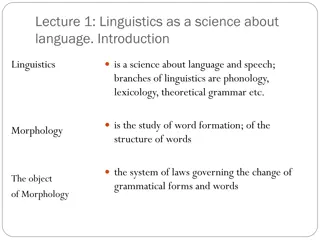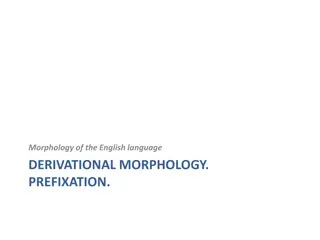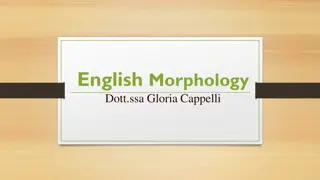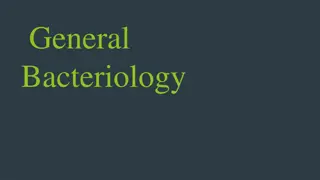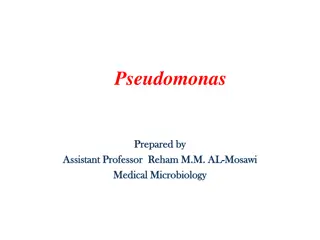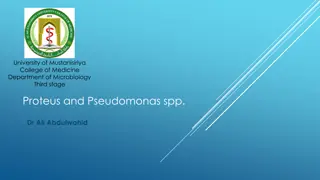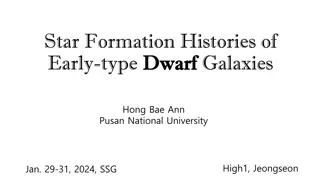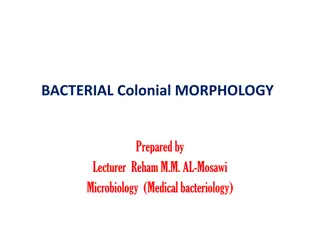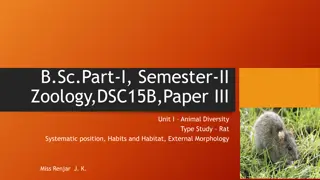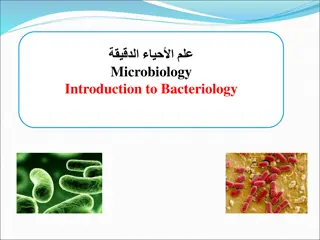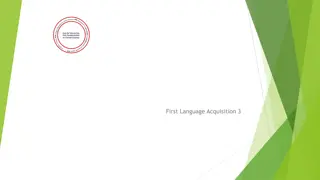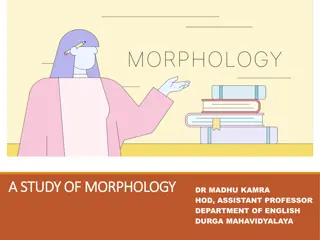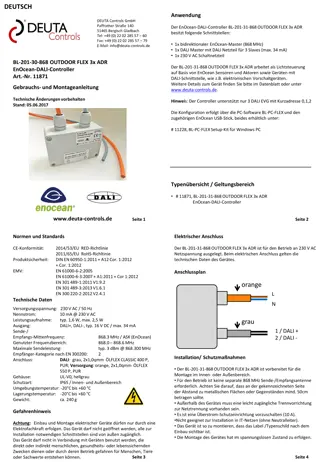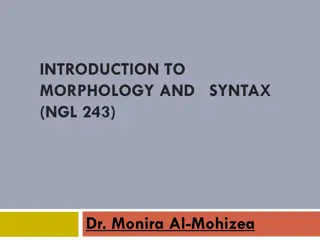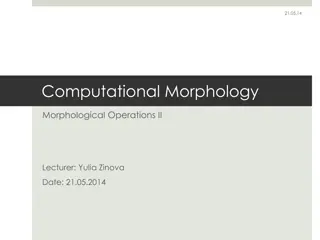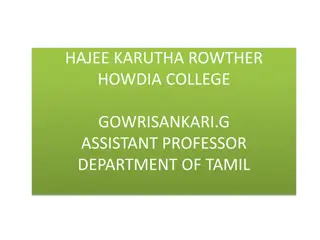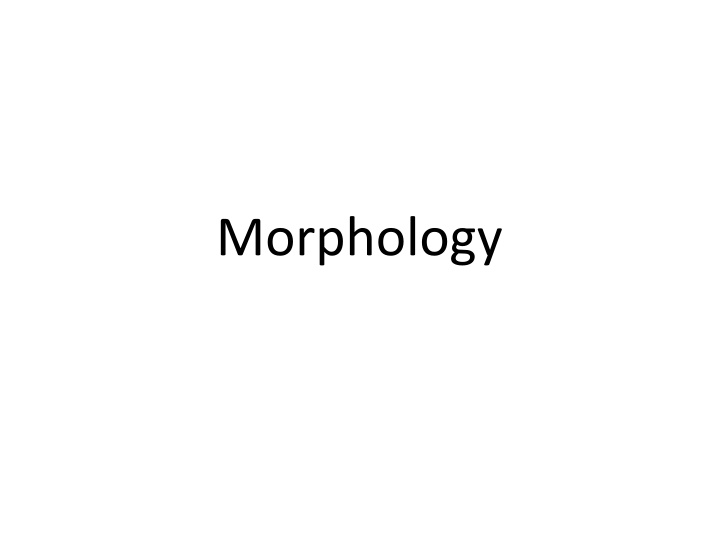
Morphology in Linguistics
Morphology is the study of words' internal structure and formation. It explores morphemes, the smallest meaningful units in a word, which can convey either a semantic or grammatical function. The concepts of free and bound morphemes, derivation versus inflection, and lexical categories like nouns, verbs, adjectives, and adverbs are examined. Derivational processes involve adding affixes to roots to create new words, while inflectional morphology focuses on creating different grammatical forms. Examples of affixes in English, such as -s for third-person singular present verbs and -ed for past tense verbs, are discussed.
Download Presentation

Please find below an Image/Link to download the presentation.
The content on the website is provided AS IS for your information and personal use only. It may not be sold, licensed, or shared on other websites without obtaining consent from the author. If you encounter any issues during the download, it is possible that the publisher has removed the file from their server.
You are allowed to download the files provided on this website for personal or commercial use, subject to the condition that they are used lawfully. All files are the property of their respective owners.
The content on the website is provided AS IS for your information and personal use only. It may not be sold, licensed, or shared on other websites without obtaining consent from the author.
E N D
Presentation Transcript
Morphology The study of words Studies the internal structure, and how they are created and formed.
A word is a string of small meaningful symbols Those meaningful symbols are called morphemes. Morphemes are the smallest meaningful units in a word. A morpheme can has a meaningful meaning, or a meaningful grammatical function .
Morphemes Free Bound
lexical categories open lexical category (content words) nouns, verbs, adjectives, and adverbs. closed lexical category (function words) pronouns, determiners (the, this, a, your etc.), prepositions, and conjunctions (and, or, but).
Cat Catty Form: / k t / / k t i / Meaning: domesticated feline spiteful, (fighting) like a domesticated feline Lexical Category: Noun Adjective Cat is the root for catty A derivational process is the one in which one operation or more is applied on a form of a word to make a new word of a different lexical category. Simply, it is about adding little things to the root. Those added pieces are called affixes . The form in which an affix is added to is called the base or the stem. So, cat is both a root and a stem.
Affixes: prefixes suffixes infixes circumfixes interfixes transfixes
Cat Cats Form / k t / / k t s / Meaning domesticated feline domesticated feline (plural) Lexical Category Noun Noun The creation of different grammatical forms of a word is called inflection
List of Inflectional Affixes in English Function Affix(es) Attaches to Example 3rd personal singular present -s verbs He waits there at noon. Past tense -ed Verbs He waited there yesterday. Progressive aspect -ing Verbs He is waiting there now Past participle -en, -ed Verbs He has eaten the cookies. He has tasted the cookies. Plural -s Nouns The students are in the classroom. Possessive - s , -s Nouns The student s book. The students books. Comparative -er Adjectives, Adverbs Ahmed is taller than Ali. Ahmed is faster than Ali. Superlative -est Adjectives, Adverbs Ahmed is the tallest in class. Ahmed runs fastest of all.
Affixation: Using prefixes and suffixes. e.g. eats, cats, playing Compounding: Forming new words by joining two or more independent words. e.g. girlfriend , textbook, air- conditioner, aircraft carrier, lifeguard chair. Reduplication: Forming new words by doubling either an entire free morpheme (total reduplication) or part of it (partial reduplication). e.g. bye-bye, ta-ta, (In Taglog: ibu =mother --> ibuibu = mothers) Alternations: Made by making morpheme internal modifications. e.g. man --> men , goose --> geese, foot --> feet, feed ---> fed ---> fed , swim --> swam ---> swum
Languages Analytic Synthetic bound morphemes are attached to other morphemes, so a word may be made up of several meaningful elements. made up of sequences of free morphemes ex: Mandarin Chinese [ w m nt n t in ] ex: Hungarian I plural play piano [ z mber l :tj kuca:t ] the man-(subject) sees the dog-(object) The man sees the dog [ kuc l :tj z mbert ] the dog sees the man-(object) The dog sees the man We are playing the piano

